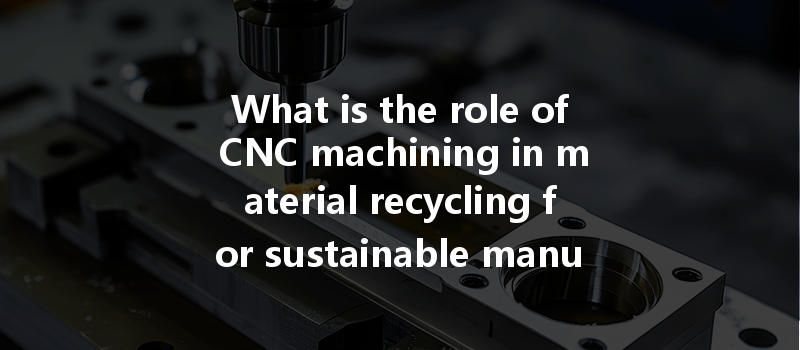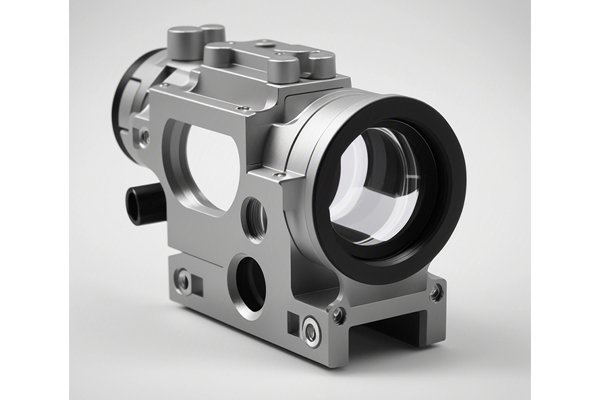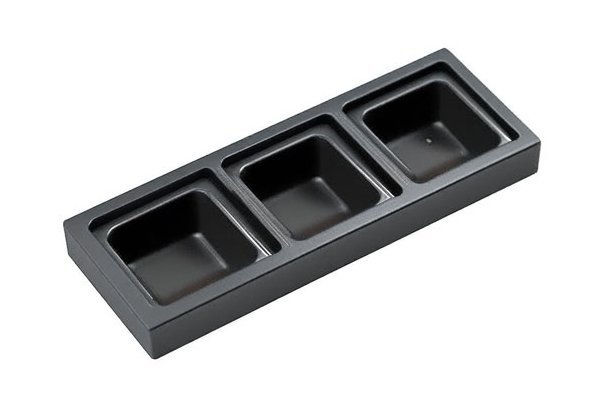Did you know that approximately 92 million tons of textile waste is generated globally each year, and only a small fraction of it gets recycled? This staggering statistic highlights a critical need in the manufacturing industry: sustainability. As global attention shifts toward sustainable manufacturing practices, the importance of recycling materials has never been more evident. Among the leading technologies making waves in this field is CNC (Computer Numerical Control) machining.
This blog dives into the multifaceted role that CNC machining plays in material recycling, discussing its benefits, processes, and innovations, while providing an in-depth analysis of how it aligns with sustainable manufacturing practices.
Understanding CNC Machining
CNC machining is a manufacturing process that employs computerized controls to manipulate machinery and tools to create precise parts and components. While CNC machining has traditionally been associated with the production of new materials, you may be wondering how it fits into the realm of material recycling.
CNC machining allows for high precision and efficiency, making it an ideal technology for recycling operations. By optimizing the use of reclaimed materials, manufacturers can significantly reduce waste while also minimizing the need for virgin raw materials. The seamless integration of CNC machining into recycling processes illustrates how traditional manufacturing practices can adapt to a more sustainable future.
The Importance of Recycling in Manufacturing
Before delving further into how CNC machining contributes to material recycling, it’s essential to understand why recycling is crucial in manufacturing. Here are some compelling reasons:
Every year, landfills overflow with discarded materials that could have been recycled. By recycling, companies can help reduce this waste, diverting materials from landfills and promoting a circular economy.
Recycling conserves natural resources by reusing materials, reducing the need for mining, drilling, and harvesting new resources. By effectively leveraging recycling, manufacturing companies can minimize their environmental impact.
Recycling creates economic opportunities. By adopting sustainable practices, businesses can not only improve their bottom lines but also capture a growing consumer base that values environmental responsibility.
Governments worldwide are increasingly instituting regulations aimed at waste reduction and environmental protection. Companies that adopt recycling practices are better positioned to adhere to these regulations and avoid potential penalties.
How CNC Machining Facilitates Material Recycling
Now that we’ve established the importance of recycling, let’s delve into how CNC machining specifically contributes to this effort.
CNC machining offers a level of precision that is crucial for recycling materials. When recycled materials are converted into new products, variations in size, quality, and shape frequently occur. CNC machinery can precisely cut, shape, and customize these materials according to specific requirements, ensuring that the final product meets design specifications.
CNC machining is compatible with various materials, including metals, plastics, and composites. This versatility allows reclaimed materials from different sources to be processed and repurposed into new products. For instance, extruded plastics can be refined into sheets and then machined into components for new applications.
With CNC machining, manufacturers can optimize cutting paths and techniques to minimize scrap material. Traditional machining methods often result in excess material waste, but CNC machining streamlines the process, ensuring that only the necessary amount of material is used. Advanced software and algorithms predict optimal paths, leading to a reduction in waste and enhanced efficiency.
One of the standout features of CNC machining is its ability to produce custom parts on-demand. This is particularly valuable in recycling, where the physical properties of reclaimed materials may vary. Manufacturers can create tailored components using specific recycled materials, leading to innovative products without compromising on quality or performance.
Recent innovations in CNC technology have further bolstered its role in recycling. For example, advancements in additive manufacturing—using 3D printing techniques alongside CNC machining—allow for the efficient use of recycled plastics. Materials can be layered and built upon, producing complex geometries that traditional processes might struggle to achieve.
Key CNC Processes Supporting Material Recycling
Several CNC processes play a pivotal role in facilitating material recycling. Let’s explore those:
CNC milling involves using rotating tools to remove material, shaping it into precise forms. This process can effectively repurpose reclaimed materials, allowing manufacturers to modify and adjust shapes, sizes, and designs according to specific requirements. For instance, aluminum scraps from production can be milled down to create components for new products.

CNC turning is another process that enhances material recycling. It involves rotating a workpiece against a stationary cutting tool, producing cylindrical parts. This method enables the effective reuse of metal and plastic scraps, converting them into practical components such as fittings or casings.
Laser cutting uses highly focused beams of light to cut through materials. This process is excellent for working with thin sheets of recycled materials, especially in textiles or plastics. It allows manufacturers to create intricate designs that are often necessary in parts engineered from reclaimed materials.
Waterjet cutting utilizes a high-pressure jet of water mixed with abrasive particles to cut through materials. This method is particularly effective for rigid and thick materials, such as metals commonly recycled in the automotive or aerospace industries.
Case Studies: Successful Implementation of CNC Machining in Recycling
Case Study 1: Electronics Recycling
In the electronics industry, the potential for valuable materials like gold, silver, and copper exists within discarded electronics. CNC machining has been employed to disassemble these components accurately, allowing for the recovery of precious metals from circuit boards. By effectively recycling these materials, manufacturers can reduce e-waste and create a market for repurposed electronic components.
Case Study 2: Recycled Plastics in Construction
An innovative application of CNC machining in the recycling of plastics has emerged in the construction sector. Manufacturers are reusing plastic waste to create composite materials that are then machined into various components for building projects. CNC technology allows precise shaping of these materials, promoting increased durability and functionality in construction applications.
Case Study 3: Automotive Parts
Automotive manufacturers have recognized the value in recycling scrap metal from production processes. By employing CNC machining, companies can turn these scraps into new parts, reducing the need for new materials while ensuring that the components meet stringent quality and safety standards.
Challenges Facing CNC Machining in Recycling
Despite its advantages, certain challenges must be addressed for CNC machining to fully realize its potential in the material recycling landscape.
Recycled materials can exhibit significant variability in quality, composition, and properties. This inconsistency can pose challenges when machining, potentially leading to defects.
The integration of recycled materials into CNC machining operations may require additional training and knowledge for operators. Understanding the characteristics of different recycled materials and how they impact processing is vital for ensuring quality outcomes.
While recycling materials can lead to cost savings, the initial investment in CNC machinery can be high. Businesses may need to weigh these costs against the long-term benefits of implementing sustainable practices.
Future Trends in CNC Machining for Sustainable Manufacturing
As we move forward, several trends are likely to shape the future of CNC machining in material recycling:
The integration of artificial intelligence (AI) and automation in CNC processes can optimize material recovery, improve efficiency, and reduce waste. AI can analyze data collection to identify patterns and enhance decision-making in recycling operations.
Research into biodegradable and sustainable materials will complement CNC machining, expanding the possibilities for material recycling. As new materials enter the market, CNC technology will need to adapt to work with these innovative alternatives.
As more industries embrace the principles of a circular economy, CNC machining’s role in recycling will become even more essential. By focusing on creating products designed for reuse, recycling, and remanufacturing, CNC manufacturers can align with sustainable goals while addressing consumer demands for environmentally-friendly options.
CNC machining plays an indispensable role in the material recycling landscape, providing enhanced precision, efficiency, and customization that substantially contribute to sustainable manufacturing practices. By leveraging advanced technologies and innovative processes, CNC machining has the potential to revolutionize how we approach manufacturing and waste management.
As industries increasingly pivot toward sustainability, the integration of CNC machining into recycling processes stands as a powerful testament to the future of manufacturing. By prioritizing recycling, we can forge a path toward economic benefits, reduced waste, and a healthier planet for generations to come. As you reflect on these insights, consider how your own practices in manufacturing or design can champion the importance of recycling and advance the cause of sustainability.
This blog is not just a call to action; it urges the community of manufacturers, engineers, and artisans to spark discussions about sustainable practices and invest in the future of our planet, one recycled material at a time. Let’s innovate for a brighter tomorrow!
—






